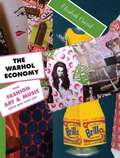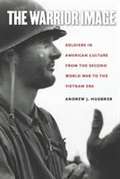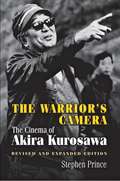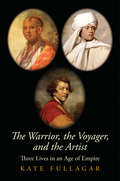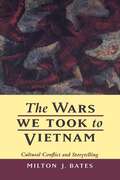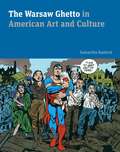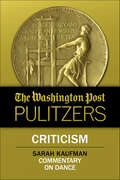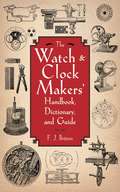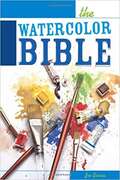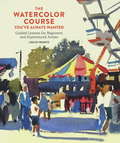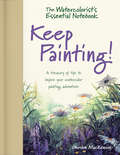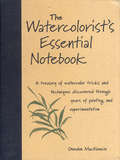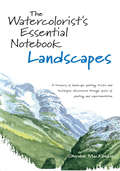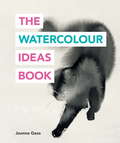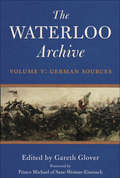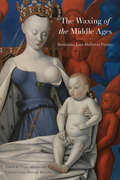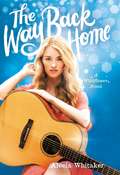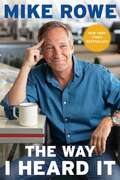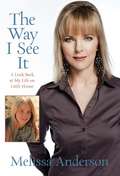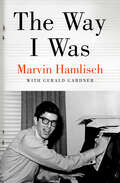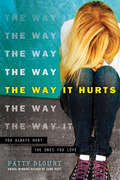- Table View
- List View
The Warhol Economy: How Fashion, Art, and Music Drive New York City
by Elizabeth Currid-HalkettWhich is more important to New York City's economy, the gleaming corporate office--or the grungy rock club that launches the best new bands? If you said "office," think again. In The Warhol Economy, Elizabeth Currid argues that creative industries like fashion, art, and music drive the economy of New York as much as--if not more than--finance, real estate, and law. And these creative industries are fueled by the social life that whirls around the clubs, galleries, music venues, and fashion shows where creative people meet, network, exchange ideas, pass judgments, and set the trends that shape popular culture. The implications of Currid's argument are far-reaching, and not just for New York. Urban policymakers, she suggests, have not only seriously underestimated the importance of the cultural economy, but they have failed to recognize that it depends on a vibrant creative social scene. They haven't understood, in other words, the social, cultural, and economic mix that Currid calls the Warhol economy. With vivid first-person reporting about New York's creative scene, Currid takes the reader into the city spaces where the social and economic lives of creativity merge. The book has fascinating original interviews with many of New York's important creative figures, including fashion designers Zac Posen and Diane von Furstenberg, artists Ryan McGinness and Futura, and members of the band Clap Your Hands Say Yeah. The economics of art and culture in New York and other cities has been greatly misunderstood and underrated. The Warhol Economy explains how the cultural economy works-and why it is vital to all great cities.
The Warrior Image: Soldiers in American Culture from the Second World War to the Vietnam Era
by Andrew J. HuebnerImages of war saturated American culture between the 1940s and the 1970s, as U.S. troops marched off to battle in World War II, the Korean War, and the Vietnam War. Exploring representations of servicemen in the popular press, government propaganda, museum exhibits, literature, film, and television, Andrew Huebner traces the evolution of a storied American icon--the combat soldier. Huebner challenges the pervasive assumption that Vietnam brought drastic changes in portrayals of the American warrior, with the jaded serviceman of the 1960s and 1970s shown in stark contrast to the patriotic citizen-soldier of World War II. In fact, Huebner shows, cracks began to appear in sentimental images of the military late in World War II and were particularly apparent during the Korean conflict. Journalists, filmmakers, novelists, and poets increasingly portrayed the steep costs of combat, depicting soldiers who were harmed rather than hardened by war, isolated from rather than supported by their military leadership and American society. Across all three wars, Huebner argues, the warrior image conveyed a growing cynicism about armed conflict, the federal government, and Cold War militarization.
The Warrior's Camera: The Cinema of Akira Kurosawa - Revised and Expanded Edition
by Stephen PrinceThe Japanese film director Akira Kurosawa, who died at the age of 88, has been internationally acclaimed as a giant of world cinema. Rashomon, which won both the Venice Film Festival's grand prize and an Academy Award for best foreign-language film, helped ignite Western interest in the Japanese cinema. Seven Samurai and Yojimbo remain enormously popular both in Japan and abroad. In this newly revised and expanded edition of his study of Kurosawa's films, Stephen Prince provides two new chapters that examine Kurosawa's remaining films, placing him in the context of cinema history. Prince also discusses how Kurosawa furnished a template for some well-known Hollywood directors, including Martin Scorsese, Steven Spielberg, and George Lucas. Providing a new and comprehensive look at this master filmmaker, The Warrior's Camera probes the complex visual structure of Kurosawa's work. The book shows how Kurosawa attempted to symbolize on film a course of national development for post-war Japan, and it traces the ways that he tied his social visions to a dynamic system of visual and narrative forms. The author analyzes Kurosawa's entire career and places the films in context by drawing on the director's autobiography--a fascinating work that presents Kurosawa as a Kurosawa character and the story of his life as the kind of spiritual odyssey witnessed so often in his films. After examining the development of Kurosawa's visual style in his early work, The Warrior's Camera explains how he used this style in subsequent films to forge a politically committed model of filmmaking. It then demonstrates how the collapse of Kurosawa's efforts to participate as a filmmaker in the tasks of social reconstruction led to the very different cinematic style evident in his most recent films, works of pessimism that view the world as resistant to change.
The Warrior, the Voyager, and the Artist: Three Lives in an Age of Empire (The Lewis Walpole Series in Eighteenth-Century Culture and History)
by Kate FullagarA portrait of empire through the biographies of a Native American, a Pacific Islander, and the British artist who painted them both Three interconnected eighteenth-century lives offer a fresh account of the British Empire and its intrusion into Indigenous societies. This engaging history brings together the stories of Joshua Reynolds and two Indigenous men, the Cherokee Ostenaco and the Raiatean Mai. Fullagar uncovers the life of Ostenaco, tracing his emergence as a warrior, his engagement with colonists through war and peace, and his eventual rejection of imperial politics during the American Revolution. She delves into the story of Mai, his confrontation with conquest and displacement, his voyage to London on Cook’s imperial expedition, and his return home with a burning ambition to right past wrongs. Woven throughout is a new history of Reynolds, growing up in Devon near a key port in England, becoming a portraitist of empire, rising to the top of Britain’s art world and yet remaining ambivalent about his nation’s expansionist trajectory.
The Wars We Took to Vietnam: Cultural Conflict and Storytelling
by Milton J. BatesWhat Americans refer to as the Vietnam War embraces much more than the conflict with North Vietnam. Milton J. Bates considers the other conflicts that Americans brought to that war: the divisions stemming from differences in race, class, sex, generation, and frontier ideology. In exploring the rich vein of writing and film that emerged from the Vietnam War era, he strikingly illuminates how these stories reflect American social crises of the period.Some material examined here is familiar, including the work of Michael Herr, Tim O'Brien, Philip Caputo, Susan Sontag, Francis Ford Coppola, and Oliver Stone. Other material is less well known—Neverlight by Donald Pfarrer and De Mojo Blues by A. R. Flowers, for example. Bates also draws upon an impressive range of secondary readings, from Freud and Marx to Geertz and Jameson.As the products of a culture in conflict, Vietnam memoirs, novels, films, plays, and poems embody a range of political perspectives, not only in their content but also in their structure and rhetoric. In his final chapter Bates outlines a "politico-poetics" of the war story as a genre. Here he gives special attention to our motives—from the deeply personal to the broadly cultural—for telling war stories.
The Warsaw Ghetto in American Art and Culture
by Samantha BaskindOn the eve of Passover, April 19, 1943, Jews in the Warsaw Ghetto staged a now legendary revolt against their Nazi oppressors. Since that day, the deprivation and despair of life in the ghetto and the dramatic uprising of its inhabitants have captured the American cultural imagination. The Warsaw Ghetto in American Art and Culture looks at how this place and its story have been remembered in fine art, film, television, radio, theater, fiction, poetry, and comics.Samantha Baskind explores seventy years’ worth of artistic representations of the ghetto and revolt to understand why they became and remain touchstones in the American mind. Her study includes iconic works such as Leon Uris’s best-selling novel Mila 18, Roman Polanski’s Academy Award–winning film The Pianist, and Rod Serling’s teleplay In the Presence of Mine Enemies, as well as accounts in the American Jewish Yearbook and the New York Times, the art of Samuel Bak and Arthur Szyk, and the poetry of Yala Korwin and Charles Reznikoff. In probing these works, Baskind pursues key questions of Jewish identity: What links artistic representations of the ghetto to the Jewish diaspora? How is art politicized or depoliticized? Why have Americans made such a strong cultural claim on the uprising? Vibrantly illustrated and vividly told, The Warsaw Ghetto in American Art and Culture shows the importance of the ghetto as a site of memory and creative struggle and reveals how this seminal event and locale served as a staging ground for the forging of Jewish American identity.
The Warsaw Ghetto in American Art and Culture
by Samantha BaskindOn the eve of Passover, April 19, 1943, Jews in the Warsaw Ghetto staged a now legendary revolt against their Nazi oppressors. Since that day, the deprivation and despair of life in the ghetto and the dramatic uprising of its inhabitants have captured the American cultural imagination. The Warsaw Ghetto in American Art and Culture looks at how this place and its story have been remembered in fine art, film, television, radio, theater, fiction, poetry, and comics.Samantha Baskind explores seventy years’ worth of artistic representations of the ghetto and revolt to understand why they became and remain touchstones in the American mind. Her study includes iconic works such as Leon Uris’s best-selling novel Mila 18, Roman Polanski’s Academy Award–winning film The Pianist, and Rod Serling’s teleplay In the Presence of Mine Enemies, as well as accounts in the American Jewish Yearbook and the New York Times, the art of Samuel Bak and Arthur Szyk, and the poetry of Yala Korwin and Charles Reznikoff. In probing these works, Baskind pursues key questions of Jewish identity: What links artistic representations of the ghetto to the Jewish diaspora? How is art politicized or depoliticized? Why have Americans made such a strong cultural claim on the uprising?Vibrantly illustrated and vividly told, The Warsaw Ghetto in American Art and Culture shows the importance of the ghetto as a site of memory and creative struggle and reveals how this seminal event and locale served as a staging ground for the forging of Jewish American identity.
The Washington Post Pulitzers: Criticism, Sarah Kaufman
by Sarah KaufmanRecipient of the Pulitzer Prize for Criticism. Sarah Kaufman covers one of the high arts&’ most illustrious forms—dance. What emerges from her criticism is always fresh and thought-provoking. From exploring Cary Grant as an overlooked artist to her bold assessment of The Nutcracker, Kaufman tackles the subject of dance and movement with daring honesty and dazzling creativity.
The Watch & Clock Makers' Handbook, Dictionary, and Guide
by F. J. BrittenWidely regarded as one of the most famous and useful encyclopedias on watch- and clock-making, this eleventh edition of the regularly updated guide was first published in 1907. This is the final edition Britten completed before his death in 1913, and it is full of classic information on tools, repairs, terms, and definitions. Britten's book is the only place to get invaluable information on watch- and clock-making techniques and technology of the early-twentieth century and be-fore. The Watch and Clock Makers' Handbook, Dictionary, and Guide is an important resource for hobbyists, artists, antique dealers, history buffs, students, and horologists-amateur and professional alike.
The Watercolor Bible
by Joe GarciaThis handy guide is a must-have addition to every artist's toolkit. Small enough to take anywhere, The Watercolor Bible offers indispensable advice for nearly every aspect of watercolor painting. It's jam-packed with useful information, featuring: <p> -Inspiring artwork and friendly instruction, including the basics on composition, color, and finding ideas <p> -A comprehensive section on materials and supplies—everything from paint, brushes, and paper to gouache and masking fluid <p> -More than 15 step-by-step demonstrations on such popular subjects as water, flowers, trees, animals, and landscapes <p> -An in-depth look at the drawing and painting techniques every artist should know <p> -Wire binding that makes it easy to flip open and reference during a painting
The Watercolor Course You've Always Wanted
by Leslie FrontzA comprehensive and practical guide to watercolor painting from sought-after instructor and acclaimed artist Leslie Frontz that answers the two most common questions students at all levels want to know: What am I doing wrong? and How do I decide what to do instead? In the tradition of the eminently practical, top-selling guides such as How to Make a Watercolor Paint Itself, The Oil Painting Course You've Always Wanted, and Problem Solving for Oil Painters, this straightforward handbook offers a fresh approach to watercolor mastery that bridges the gap between theory and practice. Through thoughtful discussion, expert instruction, and in-depth step-by-step demonstrations, Leslie Frontz shows readers how to eliminate common barriers to achieve beautiful, captivating watercolor paintings. Beginning with teaching readers how to see with an artist's eye, Frontz then establishes how watercolor painters build on this skill by making timely decisions throughout the creation process.
The Watercolorist's Essential Notebook - Keep Painting!: A Treasury of Tips to Inspire Your Watercolor Painting Adventure
by Gordon MacKenzieRecharge your creative spirit and rediscover the magic that is watercolor! Every watercolorist needs a creative kick in the pants now and then--to keep seeking inspiration when feeling uninspired, to keep going when a painting has stalled, to keep trying when a technique isn't easy to master...sometimes just to keep painting, period. When your artistic well has run dry, you must replenish it. Whether you have spent decades painting in watercolor or are just beginning, the tips and secrets shared by best-selling author and artist Gordon MacKenzie provide the perfect guide when the going gets tough. Get excited about watercolor again as he shows you how to:Find better approaches to a tired compositionEngage viewers more fully with color, value and well-placed "wee people"Reinvent a scene that outshines your reference photographsDramatize a landscape by focusing on the weatherNurture your own growth by sharing what you know with others"You don't have to paint the way you paint now. You don't have to paint what you paint now." --Gordon MacKenzie
The Watercolorist's Essential Notebook: A Treasury Of Watercolor Secrets Discovered Through Decades Of Painting And Experimentation
by Gordon MackenziePainting with watercolors gives you endless opportunities to create the world you want. You choose whether to let the sun blaze or the rain pour, to move a maple tree here or make the trail wind over there, to subdue a hillside with quiet greens or make a forest glow with dazzling golds and reds. It's not only a matter of what to paint, but how to go about painting it.This book examines, one at a time, the three major elements of landscape painting: water, sky and land. You will be encouraged to try numerous ways of painting each one. Then you can choose the methods that best express how the outdoors speaks to you.Let this reliable collection of tips, techniques, ideas and lessons be your companion on a sure path to creative fulfillment and better watercolor landscapes.
The Watercolorist's Essential Notebook: Landscapes
by Gordon MackenziePainting with watercolors gives you endless opportunities to create the world you want. You choose whether to let the sun blaze or the rain pour, to move a maple tree here or make the trail wind over there, to subdue a hillside with quiet greens or make a forest glow with dazzling golds and reds. It's not only a matter of what to paint, but how to go about painting it. This book examines, one at a time, the three major elements of landscape painting: water, sky and land. You will be encouraged to try numerous ways of painting each one. Then you can choose the methods that best express how the outdoors speaks to you. Let this reliable collection of tips, techniques, ideas and lessons be your companion on a sure path to creative fulfillment and better watercolor landscapes.
The Watercolour Ideas Book (The Art Ideas Books)
by Joanna GossMany artists first learn to paint in watercolour. But this flexible, dynamic medium has an immediacy that is perfect for experimentation. Discover textures, applications, techniques, combinations of materials, and new ways of tackling the medium you love. Rub it, dab it, scratch it, scrunch it. Cut it, glue it, sew it and seal it. And above all, learn from what other people do!This little book is full of big ideas from contemporary artists to inspire you to think differently. With a new idea on every spread of the book, you will discover fresh ways of working with watercolour to create work that is original and exciting.
The Watercolour Ideas Book (The\art Ideas Bks.)
by Joanna GossMany artists first learn to paint in watercolour. But this flexible, dynamic medium has an immediacy that is perfect for experimentation. Discover textures, applications, techniques, combinations of materials, and new ways of tackling the medium you love. Rub it, dab it, scratch it, scrunch it. Cut it, glue it, sew it and seal it. And above all, learn from what other people do!This little book is full of big ideas from contemporary artists to inspire you to think differently. With a new idea on every spread of the book, you will discover fresh ways of working with watercolour to create work that is original and exciting.
The Waterloo Archive Volume V: German Sources (The Waterloo Archive #5)
by Prince Michael of Saxe-Weimar-EisenachThe British archives of the Napoleonic wars are unique, brimming with personal letters to family and friends or journals that record their innermost thoughts. The human aspect of war comes to the fore, the humor and exhilaration; the fears and miseries; the starvation and exhaustion; the horror and the joy.It is usually accepted that very few common soldiers of this period could read or write and that the few letters and journals that do exist emanate from more senior officers, who were required to be able to write to perform their duties. Volume I proved this to be a fallacy, and this volume continues with a further three accounts, and shows how the ordinary soldier saw things, giving a different aspect to our studies. Also included:* The poignant final letters of older family men such as Major Arthur Heyland, jar noticeably with the bawdy and carefree scribbles of youth by such as Ensign Kinchant (including describing his visits to bordellos) who also lost his life that day. * A long series of letters by Lieutenant Frederick Johnston of the 6th Inniskillings and of Lieutenant George Blathwayt of the 23rd Light dragoons sheds important light on cavalry regiments who have few previously published memoirs. * A very interesting letter by Second Lieutenant Richard Cocks Eyre of the 2nd Battalion 95th Rifles makes a mockery of the myth that British troops did not openly plunder the local farmhouses before the battle for food and fuel to burn. *A letter by a civilian visitor to the area six weeks after the battle ends this volume, which will engage and fascinate the reader.
The Watson Drawing Book (Dover Art Instruction)
by Aldren A. Watson Ernest W. WatsonBoth serious students and amateurs will appreciate this guide to drawing, an ideal resource for those who want to develop their skills whether for professional reasons or simply for pleasure. Its comprehensive chapters cover all of the basic black-and-white drawing media: pencil, charcoal, pen and ink, brush and ink, quill and rush pens, felt-tip, wash, and mixed media. A showcase of technical methods allows students ample opportunity to experiment with finding their preferred approaches. Technical information includes instruction in such important basics as perspective, proportion, form analysis, light, and shade. Portrait drawing, figure sketching and outdoor sketching are also covered. In addition to the authors' sketches and studies, the text features numerous drawings in a variety of techniques by old masters as well as contemporary artists.
The Waxing of the Middle Ages: Revisiting Late Medieval France (The Early Modern Exchange)
by Zita Eva Rohr Tracy Adams Helen Swift Cynthia Brown Andrea Tarnowski Stephen Nichols Derek Whaley Anneliese Pollock Renck Charles-Louis Morand-Métivier Joan McRae Franck CollardJohan Huizinga’s much-loved and much-contested Autumn of the Middle Ages, first published in 1919, encouraged an image of the Late French Middle Ages as a flamboyant but empty period of decline and nostalgia. Many studies, particularly literary studies, have challenged Huizinga’s perceptions of individual works or genres. Still, the vision of the Late French and Burgundian Middle Ages as a sad transitional phase between the High Middle Ages and the Renaissance persists. Yet, a series of exceptionally significant cultural developments mark the period. The Waxing of the Middle Ages sets out to provide a rich, complex, and diverse study of these developments and to reassert that late medieval France is crucial in its own right. The collection argues for an approach that views the late medieval period not as an afterthought, or a blind spot, but as a period that is key in understanding the fluidity of time, traditions, culture, and history. Each essay explores some “cultural form,” to borrow Huizinga’s expression, to expose the false divide that has dominated modern scholarship.
The Way Back Home (Wildflower #3)
by Alecia WhitakerMusic sensation Bird Barrett is hitting the road, headlining her first national tour after the launch of her second album. Singing to sold-out crowds can mess with a girl's sense of perspective, though. Luckily, Bird has her older brother, Dylan, and her best friend, Stella, along for the ride to keep her grounded. Then Dylan and Stella pair off as more than friends. Feeling left behind, Bird throws herself completely into her performances, cover shoots, and high-profile interviews. And the more she tries to distract herself with her career, the further she pushes everyone away-including her longtime crush, Adam Dean, who joined the tour as her opener. When Bird breaks down, she'll need help to find her footing again. But has she pushed everyone too far? In a life like this one, a country girl needs her family and friends-and maybe an old flame-most of all. A foot-stompin' finale to Alecia Whitaker's irresistible Wildflower series.
The Way Hollywood Tells It: Story and Style in Modern Movies
by David BordwellAn essay on Hollywood storytelling, showing how storytelling has (and has not) changed since the end of the studio era.
The Way I Heard It: True Tales For The Curious Mind With A Short Attention Span
by Mike RoweExecutive producer and host Mike Rowe presents a delightfully entertaining, seriously fascinating collection of his favorite episodes from America’s #1 short-form podcast, The Way I Heard It, along with a host of personal memories, ruminations, and insights. It’s a captivating must-read. <P><P>The Way I Heard It presents thirty-five mysteries “for the curious mind with a short attention span.” Every one is a trueish tale about someone you know, filled with facts that you don’t. Movie stars, presidents, bloody do-gooders, and villains—they’re all here, waiting to shake your hand, hoping you’ll remember them. <P><P>Delivered with Mike’s signature blend of charm, wit, and ingenuity, their stories are part of a larger mosaic—a memoir full of surprising revelations, sharp observations, and intimate, behind-the-scenes moments drawn from Mike’s own remarkable life and career. <P><P><b>A New York Times Bestseller</b>
The Way I See It: A Look Back at My Life on Little House
by Melissa AndersonThe star of "Little House on the Prairie" takes readers onto the set and inside the world of the iconic series. Filled with personal, revealing anecdotes and memorabilia from the "Little House" years, this book is also a portrait of a child star who became a successful adult actress and a successful adult.
The Way I Was
by Marvin Hamlisch Gerald GardnerThe EGOT-winning composer of The Way We Were and A Chorus Line recounts his remarkable life from childhood to Broadway and Hollywood. The son of Jewish Viennese immigrants, six-year-old Marvin Hamlisch&’s early musical talent and discipline led him to Julliard, where he studied for more than a decade. From there, Hamlisch got his start as a rehearsal pianist for Funny Girl starring Barbra Streisand. He went on to co-create the classic American musical A Chorus Line and wrote the Oscar Award–winning musical score for The Way We Were. Hamlisch is one of only a handful of people to achieve EGOT status—winning an Emmy, a Grammy, an Oscar, and a Tony. In this autobiography, Hamlisch tells the tale of his life and career, revealing personal stories of his childhood, his marriage, and his friendships with stars including Liza Minnelli, Groucho Marx, and others. It offers an intimate view of his life and a compelling portrait of Broadway and Hollywood through the second half of the twentieth century.
The Way It Hurts
by Patty BlountThere may be two sides to every story, but sometimes there's only one way to set things right...Music is Elijah's life. His band plays loud and hard, and he'll do anything to get them a big break. He needs that success to help take care of his sister, who has special needs. So he'd rather be practicing when his friends drag him to a musical in the next town...until the lead starts to sing.Kristen dreams of a career on stage like her grandmother's. She knows she needs an edge to get into a competitive theater program—and being the star in her high school musical isn't going to cut it. The applause and the attention only encourage her to work harder.Elijah can't take his eyes off of Kristen's performance, and his swooning face is captured on camera and posted with an out-of-context comment. It goes viral. Suddenly, Elijah and Kristen are in a new spotlight as the online backlash spins out of control. And the consequences are bigger than they both could have ever imagined because these threats don't stay online...they follow them into real life.
